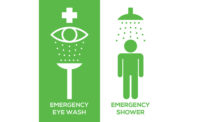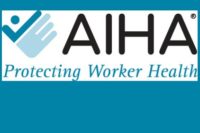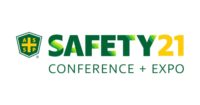ACT is an organizational EHS assessment tool developed by Mark Katchen, managing principal of The Phylmar Group, that EHS professionals can used as part of the interview process when seeking employment or when comparing the programmatic commitment of different organizations. ACT evaluates how three critical EHS issues are handled – or not addressed:
- Automation or elimination of processes is used to reduce risks and compensate for individual fallibility and human error. Practitioners of Human and Organizational Performance (HOP) believe no one will ever eliminate all errors. Humans are fallible, people make mistakes, and there’s nothing you can do to change those core facts, according to HOP principles.
- Culture is an organization’s commitment to safety and health policies and rules with a zero tolerance for infractions. There are no excuses, no exceptions for violations. Violators are dismissed from the company. Accountability runs deep and strong in zero tolerance cultures.
- Training must be conducted at a high level to address hazards that cannot be automated or eliminated. No PowerPoint canned lesson with a short quiz tacked on at the end. High level training incorporates simulations and conducts assessments to determine the effectiveness of training. Robust training for high risk situations is similar to jet pilot training, even using virtual reality to provide realistic simulations if a company cannot automate or eliminate the risk. This training is used for high risk, mission critical operations, so employees know instinctively how to respond to various risk scenarios.
ACT leads to questions
“When an EHS professional is interviewing for a job, these questions are the ones to be asked,” says Katchen. “Regarding zero tolerance and a culture’s strong emphasis on accountability, ask for an example of someone who was discharged or suspended for a safety policy violation.’ ‘Ask for examples where high risk processes have been automated or eliminated. How much resources and over what period of time did the automation or elimination require?? How was management convinced to allocate the resources? ’
“I would say the ones who are looking at job openings shouldn’t be afraid to ask the hard questions,” says Katchen. “You’ve got to hold their feet to the fire. It does take courage. Ask questions of everyone you interview with, to assess consistency in the organization. ‘Can you point out the zero tolerance policy, where that has been applied, show me the documents. Show me your training program. How do you assess the effectiveness of training?’
“You want to talk to a broad swath of personnel during the interview including the operations people; ,” says Katchen. “You’re looking for ACT consistency across the organization’s departments, and newly acquired companies. Are workers trained to evaluate the risk associated with their individual environments? Do they get the equipment needed, to protect themselves? If not, the training is ineffectual.
The ten percenters
Here’s the rub. Katchen estimates less than ten percent of organizations in the U.S commit to ACT. Why?
“ACT costs money,” says Katchen. “It’s complicated. To automate or eliminate a risk may result in labor the elimination of a position and anger workers who have lost their jobs. There can be union problems. But to automate or eliminate may be less expensive than sophisticated jet pilot level training. And to truly embed zero tolerance, full accountability in a culture may have execs firing long-tenured operations people, maybe some of a company’s best employees. Often c-suite leaders don’t want spend the money, don’t want to fire the violator. Firing people is harder than writing a check for a safety investment for many execs. And many corporate leaders have not had formal training in business schools with courses in environmental safety and health or sustainability. They don’t know what they don’t know about EHS.”
The lure of ESG
Some job seekers will be impressed if a company has a high ESG (environment, social and governance) rating, “A lot of ESG is for consumption by the investment community,” says Katchen, “A lot of the fundamentals behind ESG have been practiced for decades. Environment historically focused on controlling pollution sources and more contemporaneously includes climate change. Social (where safety resides) focuses on controlling/eliminating illness and injury. What innovations has a company implemented under the ESG banner? What new technologies are used to reduce pollution and serious injuries and fatalities? You have to look under the hood of ESG.”
Here's another reality check: Look at the CEO’s statements to investors and other stakeholders. How often are safety and health mentioned? CEOs may devote a paragraph or two about safety and health in annual reports. But it is often more happy talk – declining injury statistics, improving safety and health performance, sustaining a culture of caring -- all with the emphasis on the positives.
The model CEO
It’s been more than 20 years since Paul O’Neil retired as CEO of Alcoa, and he is still the go-to CEO for safety leadership. Why? There hasn’t been a big brand CEO in two decades who champions safety with the passion O’Neil possessed and articulated. For example: “I intend to make Alcoa the safest company in America. I intend to go for zero injuries…. “If you want to understand how Alcoa is doing, you need to look at our workplace safety figures.” O’Neill as CEO literally put safety first.
O’Neill’s financial numbers were another measure of how Alcoa was doing, When O’Neill left Alcoa in 2000, the company’s income was five times higher than when he’d started. And its market value had increased from $3 billion to over $27 billion.
The measure of a CEO
Take the measure of the CEO. Has he or she been personally affected by a work injury or fatality? Some have a conversion experience after attending a funeral, spending time with the grieving family, or having witnessed up close an earth-shaking catastrophe. Is the CEO reacting with knee-jerk short-term plans, or has the CEO adopted a long-term view of the value of safety – and ACT?
Many EHS job-seekers won’t find work in the most elite and progressive companies – those five to ten percenters representing the best of the best. If you land a job out of the ten percenters, don’t simply settle in, says Katchen. “You can evangelize if you have the ear of right person, and you may win a battle here and there,” Says Katchen.
There is a continuum of where companies and CEOs are today regarding safety and health. You need to know what you’re getting into. Is there a fit between you and your employer’s place on the continuum? Where does the employer stand regarding your ACT scorecard? Is there a cultural consistency across the organization? Do you have access to the CEO? Keep asking questions. The answers can give clarity to where you are and where you want to go.
This article originally appeared in the Phylmar Group Newsletter. For more information, visit https://www.phylmar.com/




